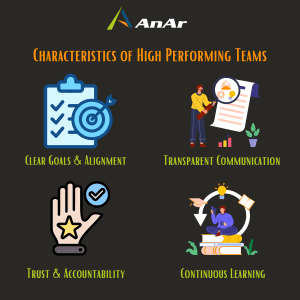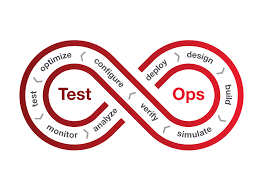Picture a team that never meets in the same room, yet still consistently outperforms competitors, drives innovation, and maintains a vibrant, cohesive culture. This isn’t a futuristic pipe dream—it’s a growing reality for companies that understand how to build high-performance remote teams. But bringing together people from different time zones, backgrounds, and working styles isn’t as simple as handing out laptops and hopping onto Zoom calls. It’s about establishing the right foundations—trust, clarity, open communication—and harnessing the right tools to transform a scattered workforce into a truly unified and effective unit.
In this blog, we’ll tackle the most pressing concerns that set extraordinary remote teams apart from those that merely function. You’ll learn how to spot early signs of underperformance, cultivate a culture grounded in trust and inclusivity, and apply data-driven insights to maintain momentum—regardless of where in the world your team members are logging in.

Why High-Performance Matters in a Remote Setting?
Operating remotely removes traditional guardrails: the quick feedback loops of hallway conversations, the subtle motivational cues of shared office energy, and the immediate support of coworkers seated nearby. In this environment, maintaining high performance becomes not just a goal, but a necessity. Without careful strategy and deliberate action, productivity can falter, innovation may stagnate, and team morale can slip.
Yet, high-performance isn’t out of reach simply because team members aren’t in the same room. In fact, remote teams often have unique advantages—from flexible schedules to a broader talent pool—that can help them outperform their in-office counterparts. By investing in structured communication, trust-building, and a culture of continuous improvement, organizations can transform geographic distance into a competitive edge.
A high-performance remote team transcends physical distance with clarity, trust, and adaptability. Each member knows exactly what they’re working toward and why it matters. Trust flourishes through open communication, where questions, feedback, and help requests are met without judgment. To prevent confusion, communication is deliberate and structured, ensuring that critical information flows smoothly across time zones.
Such teams don’t shy away from change; they embrace continuous learning and evolving tools, turning obstacles into opportunities for improvement. The result is a cohesive unit, aligned in purpose and capable of delivering exceptional results—no matter where its members call home.
Characteristics of High-Performing Remote Teams
- Clear Goals & Alignment:
Successful remote teams don’t waste time second-guessing their purpose. Each member knows what they’re working toward, how their tasks fit into the bigger picture, and the criteria for success. This clarity ensures that everyone moves forward in sync, confident about priorities and individual responsibilities. - Open, Transparent Communication:
When distance separates colleagues, good communication is non-negotiable. High-performing teams establish clear channels and norms—whether via chat, video calls, or asynchronous updates—so no one is left in the dark. Questions get answered promptly, feedback flows freely, and misunderstandings are resolved before they escalate. - Trust & Accountability:
Without the immediate oversight of a traditional office, trust becomes the foundation of performance. Team members take ownership of their commitments, delivering on promises and respecting deadlines. In turn, their peers trust that everyone will pull their weight and share knowledge openly, creating a cycle of reliability that fuels productivity. - Collaboration & Support:
Great remote teams aren’t isolated silos—they’re vibrant networks of support. People share resources, troubleshoot problems together, and collectively celebrate wins. Even informal interactions—like swapping tips on a new tool or celebrating a birthday virtually—build camaraderie, nurturing a sense of belonging that transcends geography. - Continuous Learning & Adaptability:
With technology and market conditions changing rapidly, complacency isn’t an option. High-performing remote teams embrace new tools, iterate on processes, and welcome fresh perspectives. They learn from setbacks and pivot swiftly, ensuring they stay relevant, resilient, and poised for long-term success.
How to identify an underperforming teams?
Spotting a team that’s struggling often comes down to recognizing patterns rather than isolated incidents. If your remote group seems stalled, look for recurring signs that productivity, communication, and morale are slipping:
- Communication Breakdowns:
Are instructions repeatedly misunderstood or important messages frequently missed? Chronic miscommunication slows progress and creates frustration. - Low Trust & Lack of Accountability:
Notice if team members are reluctant to own up to mistakes, or if discussions lean toward blame and skepticism rather than cooperation. - Poor Collaboration & Engagement:
When individuals work in isolation, avoid knowledge-sharing tools, or rarely contribute to group discussions, the team is losing valuable creative synergy. - Inefficient Time Management & Burnout:
Long hours paired with declining results often signal inefficient workflows and mounting fatigue, preventing the team from performing at its best. - Underutilized Tools & Resources:
If powerful platforms or training opportunities are available but remain overlooked, the team may lack the structure or motivation to fully capitalize on what’s provided.
How Can You Lay a Strong Foundation for High-Performing Remote Teams?
Building a strong base for your remote team begins well before anyone logs in from home. Start by hiring the right people—those who not only have the necessary skills but also show flexibility, cultural fit, and strong communication habits. Pay attention to legal and security frameworks, ensuring everyone works with clarity and confidence under consistent guidelines.
As you set expectations, make goals crystal-clear and establish stable communication norms so there’s no guesswork about roles, responsibilities, or protocols. By combining careful selection, defined structures, and a supportive, compliant environment, you create the solid footing a high-performing remote team needs to thrive.
How Do You Create a Trustful and Inclusive Remote Culture?
Start by making psychological safety a cornerstone of every interaction. Encourage team members to be open, ask questions, and share concerns without fear of judgment. When mistakes occur, treat them as opportunities to learn rather than reasons for blame. This approach lays the groundwork for an environment where people feel respected, heard, and supported—regardless of their time zone.
Next, tie daily work back to the organization’s broader purpose. Regularly highlight company values, mission statements, and recent milestones to remind everyone that they’re contributing to something meaningful. By reinforcing this shared sense of identity, you help transform a geographically dispersed group into a close-knit community, united by mutual trust and a clear, collective vision.
What Strategies Encourage Open Communication and Effective Collaboration?
First, establish clear communication guidelines so everyone knows where and how to share information. Define which channels are best for quick updates, which for in-depth discussions, and when it makes sense to use asynchronous methods. Regular check-ins—through brief video calls or chat stand-ups—help maintain alignment, ensuring that no one feels left out or lost in the shuffle.
Beyond formal communication, embrace tools and practices that foster genuine teamwork. Introduce project management platforms for seamless coordination, and encourage the use of shared documents and knowledge repositories to keep everyone working from the same playbook. Don’t overlook the value of informal interaction: casual chats, virtual “watercooler” moments, and mentorship pairings can strengthen relationships, spark creativity, and help remote teams feel truly connected.
Which Tools and Metrics Will Help You Drive and Measure Performance?
Look for platforms that provide data on communication patterns, meeting attendance, and task completion rates. Analytics dashboards can highlight bottlenecks and successes, helping you pinpoint which teams need support and where best practices are emerging. Focus on metrics aligned with goals—such as response times, deliverable quality, and project milestones—to ensure you’re measuring what truly matters. With the right insights, you’ll know when to optimize workflows and recognize exceptional contributions, ultimately driving sustained high performance.
How Can You Ensure Strong Leadership and Manage Time Zone Differences?
Develop local leaders who understand regional nuances and keep everyone aligned with core values. Establish common “core hours” to ensure at least a few overlapping working hours for synchronous collaboration. When no perfect overlap is possible, set clear expectations for response times and use asynchronous tools to keep progress moving. By combining capable leadership with well-defined schedules, your team stays cohesive and efficient—no matter where they’re located.
How Do You Support Growth, Development, and Retention in a Remote Workforce?
Provide opportunities for professional advancement through virtual training, mentorship programs, and skill-building workshops. Set clear development goals, and give employees time and space to learn. Recognize achievements and offer constructive feedback regularly, so team members feel valued and see a path forward. With these efforts, you’ll foster loyalty and keep your best talent engaged—even when they’re miles apart.
Why Is a Structured Offboarding Process Critical for Continuous Improvement?
A well-defined offboarding process helps you learn from each departure. Exit interviews, knowledge transfers, and final handovers clarify what worked, what didn’t, and where your team can improve. By treating offboarding as an opportunity to refine hiring practices, adjust workflows, and strengthen communication, you ensure that every exit leaves your team more resilient and better prepared for future growth.
Conclusion
Building a high-performance remote team is an ongoing journey—one that demands vision, adaptability, and attention to every detail. From careful hiring and secure legal frameworks to a culture of trust and inclusivity, each move lays a stronger foundation. Well-defined communication protocols, the right tools and metrics, and thoughtful leadership keep everyone aligned, regardless of distance. As remote work continues to shape the future, following these principles will guide your team toward sustained success—no matter where they’re logging in from.
Explore the features of MSTest, NUnit, and xUnit: three leading unit testing frameworks that enhance your C# development process.
Organizations across the globe are increasingly turning to legacy modernization to keep pace with rapidly evolving business needs and stay ahead of…
In waterfall project management, software engineers create a feature and then throw it over to the quality assurance team (QA)…
Test and Operations (TestOps) is the emerging trend in testing. It introduced a newer technique of testing. This advanced testing…










